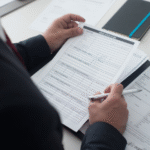Overview
The futures market is one of the most dynamic trading areas, where millisecond execution, real-time data, and deep analysis can determine outcomes. As this market grows more accessible, traders increasingly rely on digital platforms to manage everything from charting to order execution. We will explore how the choice of a trading platform plays a central role in shaping performance, strategy, and even emotional control during live trading. Unlike traditional stock investing, futures trading requires tools that respond instantly to market volatility. Whether you’re placing multiple trades in a session or monitoring technical levels for a swing setup, the functionality of your platform directly impacts your confidence and efficiency. As traders demand more from their software—such as algorithmic integration, multi-device syncing, or custom analytics—the marketplace for trading platforms has evolved to accommodate these needs. What was once limited to brokerage terminals has expanded into a competitive space filled with platforms tailored to the fast pace of modern futures trading.
Digital Tools That Shape Trading Outcomes
- Interface Design and Functionality That Match Your Approach
A trading platform is more than a piece of software—it’s the digital environment where your strategy comes to life. That’s why interface design, ease of use, and navigational logic matter as much as technical features. Traders who scalp for seconds and those who hold overnight positions may both trade futures, but their platform needs are vastly different. Customizability becomes essential when arranging charts, level 2 data, and order tickets. A cluttered or counterintuitive interface slows reaction time, especially when the market moves fast. Some platforms allow drag-and-drop modules or hotkey trading, offering speed and clarity when seconds count. For many users, the best platform for futures trading aligns with their decision-making process, letting them act without second-guessing tool placement or functionality. These design elements might seem minor, but in the intensity of trading, the difference between smooth execution and confusion can determine whether a trade succeeds or fails.
- Data Feeds and Latency: Under-the-Hood Considerations
Beyond surface design, what drives a trading platform’s performance is often hidden in its data infrastructure. Futures traders rely on split-second updates; even minor delays in quote delivery can cause slippage or missed entries. Real-time data feeds, market depth, and order book visibility are core requirements, especially for traders operating in high-volume contracts. Latency—the time it takes for a signal to travel from your platform to the exchange—should be minimized as much as possible. Some platforms offer direct market access (DMA), and route orders with fewer intermediaries, enhancing speed and execution quality. These split-second efficiencies are critical for traders using automated systems or trading during periods of high volatility. A platform’s data quality isn’t just about having charts that look good—it’s about having actionable, precise, and real-time information. Choosing a platform with robust back-end architecture can help avoid unnecessary trade errors and align your execution with the strategy you’ve built.
- Support for Custom Tools and Automation Features
As traders become more sophisticated in their methods, many are turning to custom indicators, algorithmic setups, or strategy automation. A futures platform that supports these features can become more than just a place to place trades—it becomes a partner in strategy execution. Some platforms offer scripting languages, allowing traders to program alerts or automated trades based on specific market conditions. Others integrate third-party tools like TradingView, Python APIs, or cloud-based analytics. These capabilities can dramatically improve workflow, especially when managing multiple instruments or timeframes. Testing a strategy in a simulated environment and then deploying it live with the same settings saves time and builds confidence. Automation plays a key role in decision-making for those who want to reduce human emotion. It frees the trader to focus on broader market analysis or trade management rather than clicking buy or sell at the right moment. Over time, this synergy between trader and technology improves consistency, which is vital in futures trading.
- Mobile and Cross-Device Accessibility for Today’s Traders
Mobile and multi-device access has become a standard expectation in a world that no longer keeps people tethered to desks. Futures markets move fast, often responding to global events at any time of day. A modern platform must offer mobile capabilities that mirror the desktop experience in design and performance. From executing trades to checking margin requirements, traders want complete control no matter where they are. The ability to set alerts, adjust orders, or close positions while away from the computer adds flexibility that wasn’t available just a few years ago. Platforms that sync across devices ensure that work done in one environment appears in another, whether it’s a chart setup or a watchlist. This fluidity helps traders maintain situational awareness and seize opportunities without being physically present in front of a monitor. As trading becomes more integrated into daily life, accessibility becomes convenient and essential for consistent performance.
Choosing the right futures trading platform is a decision that reaches far beyond aesthetics or brand recognition. It’s about finding a tool that matches your trading style, provides reliable access to real-time data, and allows you to execute precisely and confidently. As more traders enter the futures market with different goals—from intraday scalping to long-term hedging—the demand for customizable, high-performance platforms continues to rise. Whether it’s the ability to automate entries, analyze trades post-session, or react quickly through mobile access, the platform extends your strategy and mindset. The evolving landscape of futures trading makes it essential for traders to periodically reassess their tools and adapt to technology that supports their growth. With the right platform, traders are better equipped to stay focused on the market rather than battling the interface between them and their next trade. Your chosen platform becomes part of your edge in a field where timing and clarity are everything.











